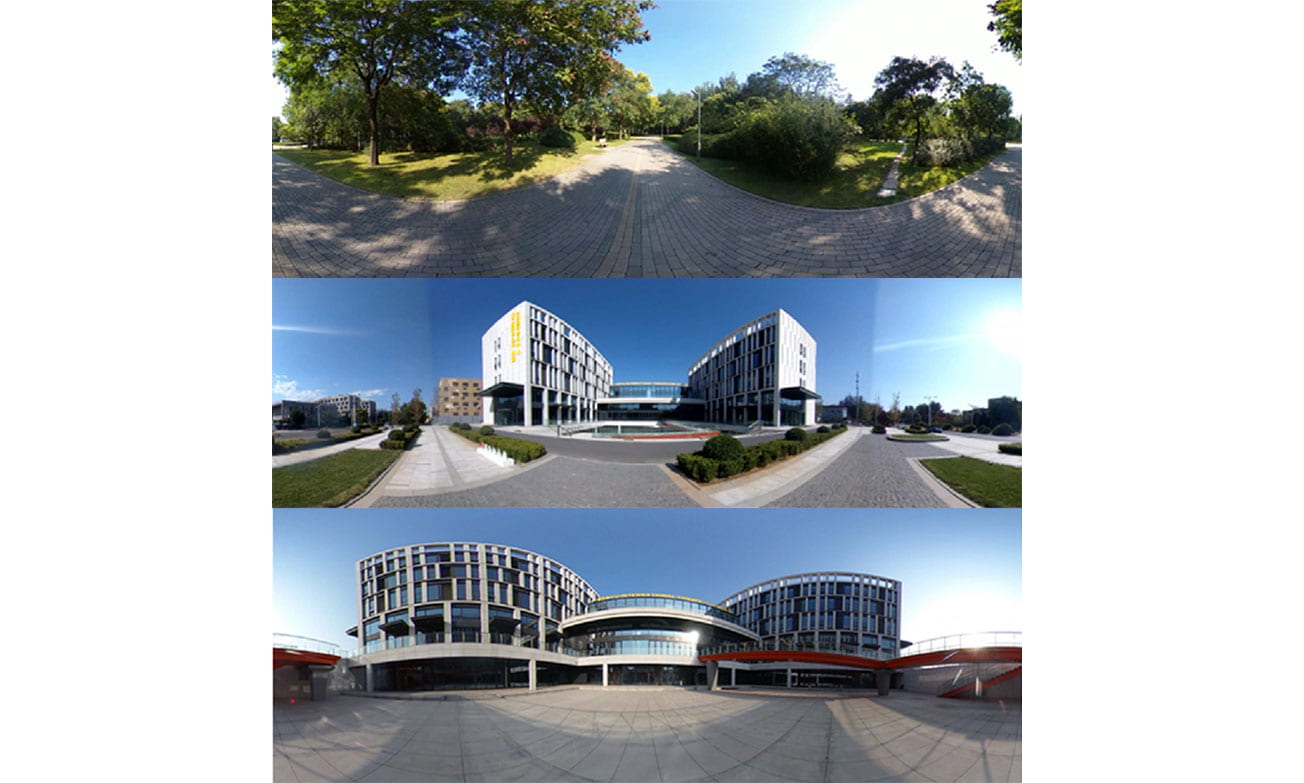UCI-led study finds virtual green space exposure beneficial to pregnant women
Parklike setting was most effective in reducing physiological and affective stress

Irvine, Calif., Nov. 17, 2022 – Pregnant women exposed to a green space environment in a virtual reality setting experienced decreases in blood pressure and improvements in mental health and well-being, according to a study led by the University of California, Irvine.
In a paper recently published in Environmental Research, co-corresponding author Jun Wu, Ph.D., professor of environmental and occupational health in UCI’s Program in Public Health, examined the short-term responses of urban pregnant women exposed to a virtual reality green space.
“Even short exposure to a virtual green space environment showed physiological and affective stress reduction among pregnant women,” Wu said. “It’s not the same as the real world, but this study helps inform city planners who are creating urban spaces. It proves the importance of green space to the well-being and mental health of the population living in those spaces.”
There is extensive research on the positive impacts of green space exposure on health and well-being, including reduced risk of mortality, cardiovascular disease and Type 2 diabetes; improved pregnancy outcomes such as decreased risk of low birth weight and preterm birth; and enhanced mental health. However, exploration of the link between physiological mechanisms and green space among special populations, like pregnant women, has been lacking.
Researchers recruited 63 healthy pregnant women from Beijing to participate in the double-blind, randomized study. They began by triggering anxiety among them via a lab-developed stress test. Then the women were shown three five-minute, 360-degree videos of urban environments: one depicting a parklike setting, the second consisting of a street view with green space, and the third featuring a street view without green space.
Before and after the videos, researchers measured participants’ blood pressure, heart rate and skin conductance level; collected saliva samples; and administered a questionnaire about positive (i.e., attentive, active, alert, excited, enthusiastic, determined, inspired, proud, interested or strong) and negative (i.e., hostile, irritable, ashamed, guilty, distressed, upset, scared, afraid, jittery or nervous) emotions.
The team found that visual exposure to a VR green space environment was associated with lower systolic blood pressure, reduced salivary alpha-amylase (an indicator of stress), improved positive emotions and decreased negative emotions compared to the non-green space environment. The parklike setting had the highest positive reaction out of the three videos.
The researchers suggest that future studies of a similar kind consider different “dosages” of urban green space; computer-generated scenarios versus actual nature environments; and short- versus long-term impacts.
Additional co-corresponding authors on this study are Yi Sun, Ph.D., of the UCI Program in Public Health and Liyan Xu of Peking University’s College of Architecture and Landscape Architecture. Co-authors include Fu Li, Ph.D., and Jie Yin of Peking University; Tao He of the UCI Program in Public Health; Yaohan Meng of Chinese Academy of Medical Sciences and Peking Union Medical College; and Ilona S. Yim, Ph.D., UCI professor of psychological science.
About UCI’s Brilliant Future campaign: Publicly launched on Oct. 4, 2019, the Brilliant Future campaign aims to raise awareness and support for UCI. By engaging 75,000 alumni and garnering $2 billion in philanthropic investment, UCI seeks to reach new heights of excellence in student success, health and wellness, research and more. The planned School of Population and Public Health plays a vital role in the success of the campaign. Learn more by visiting https://brilliantfuture.uci.edu/school-of-population-and-public-health.
About the University of California, Irvine: Founded in 1965, UCI is a member of the prestigious Association of American Universities and is ranked among the nation’s top 10 public universities by U.S. News & World Report. The campus has produced five Nobel laureates and is known for its academic achievement, premier research, innovation and anteater mascot. Led by Chancellor Howard Gillman, UCI has more than 36,000 students and offers 224 degree programs. It’s located in one of the world’s safest and most economically vibrant communities and is Orange County’s second-largest employer, contributing $7 billion annually to the local economy and $8 billion statewide. For more on UCI, visit www.uci.edu.
About the UCI Program in Public Health: UCI’s Program in Public Health is dedicated to the achievement of health equity for all populations through teaching, research, service and public health practice locally and globally. Championing the principles of evidence-based public health science, the program aspires to understand and impact population-level social, biological and environmental determinants of health and well-being. Drawing from the diverse expertise of its faculty, it aims to educate the future workforce of California and beyond through exceptional programs and experiential learning opportunities. For more information, visit publichealth.uci.edu.
Media access: Radio programs/stations may, for a fee, use an on-campus ISDN line to interview UCI faculty and experts, subject to availability and university approval. For more UCI news, visit news.uci.edu. Additional resources for journalists may be found at communications.uci.edu/for-journalists.

